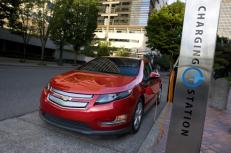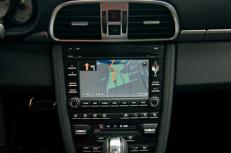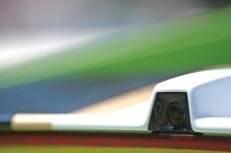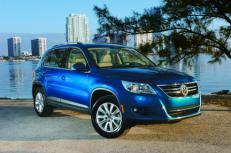Editor’s Note: I have to admit: I was a bit disappointed that 2011 began without a flying car or a rocket backpack in my garage. Yes, automatic windows, DVD players, dual-control thermometers, and global positioning systems (GPS) are almost standard enhancements and have made driving a lot more comfortable, but I’m ready for some Jetson-style transportation.
As Tom Martin, editor of Winding Road magazine discusses below, those incremental enhancements are pieces of a puzzle that will ultimately get me pretty close to my Jetsons fantasies. But they are also going to challenge the way we organize and value our communities.
For many years, transportation by-products—congestion, pollution, the costs of roads and transportation infrastructure—have been the focus of transportation technology. But as technology advances to address those by-products, it is also bumping up against debates over suburban sprawl and the development of urban cores.
The emergence of a viable electric car and the imminent production of completely driverless cars are going to give us new choices in how we want to live. For a country that is better at picking out breakfast cereal than making hard choices about our futures, these advances are going to challenge the way we value and set expectations for our communities.
Not Your Father’s Edsel
It’s been an impressive decade or two of technological advances for personal cars. From fuel efficiency to entertainment to safety features, technology has made today’s cars pretty spiffy.
- You want 150 miles per gallon? Done. We’ve already figured out how to make highly efficient vehicles that don’t require much, if any, power from gasoline systems. In 2011, three entirely electric vehicles entered the market. In the context of current cars, we’re talking 100 mpg. Two of the three are new, one has been on market for 2 years.
- Fancy maps. GPS tells us where the roads are, where we are, and where our destination is. We even have an array of voices that can tell us that we’ve made a wrong turn. Someday they may even be able to tell us if we’ve forgotten to button our pants or have a piece of spinach in our teeth.
- The Driving is Easy. From the oldie-but-goodie cruise control to electric steering, electronic throttle, electronically controlled power brakes, and electronically controlled automatic transmissions; we’ve got a lot of helpers in the car.
- No more parking by feel. Proximity sensors and rear and 360-degree cameras allow us to know where things are in relation to our vehicle even when they’re not directly visible from the driver’s seat.
- Understand our surrounding environment. All these sensors and cameras are gathering very important information. Car makers are using components such as Blind Spot Information Systems (BLIS) that recognize lines and vehicles, velocity and distance software, brake override, antilock braking, traction control, and stability control to allow vehicles to make complex assessments and adjustments based on your immediate surroundings.
Tip of the iceberg
Individually, these are great bells and whistles, but independently, they are not particularly transformational—yet.
Right now, we have limited choice, low supply, and high prices. There are three electric vehicles on the market out of about 500 makes and models. If you have four children and you need a vehicle for six people, there are zero six-passenger electric vehicles on the market.
Even if everyone buying a car today wanted an electric car, it would take years to build the facilities necessary to supply those vehicles. The United States produces about 12 million gas and diesel vehicles per year, while only 20,000 electric vehicles are produced each year worldwide. And electric vehicles are priced too high to penetrate the market. The average car in the United States sells for $28,000; all electric vehicles are above average in price, costing that amount or more.
But these are very solvable problems. We’re in a situation similar to that of personal computers in 1990: They weren’t powerful enough to run graphical user interfaces, but nobody in the computer business thought that was a problem they weren’t going to solve. It would be solved incrementally. And here we are, 20 years later, with massive hard drives and fast processors that not only handle very complicated graphical user interfaces, but also connect to the internet, are video-capable, and run complex games.
We can look at vehicle efficiency and advances the same way. It’ll just take 10 or 20 years to fully roll out the production systems and reduce the prices to place an electric vehicle in every garage, if we want them. And, in time, microprocessors and software will be able to connect the different sensors, electronics, and maps to create fully automated personal vehicles.
Look Ma—No Hands!
It’s not just science fiction. Automated cars are already being developed, and for many good reasons.
Automated vehicles won’t do all those bad driving behaviors that slow traffic flow, such as gawk at accidents or cut you off. Car-to-car distances can be reduced dramatically and safely. Driverless electric cars give us the ability to use cars in high-density settings without negative consequences such as pollution and traffic. Plus, spending 40 minutes commuting in a vehicle you don’t have to drive is different from spending 40 minutes behind the wheel. You can do e-mail, read, or work—you haven’t lost that time. By using automated logic to control each car in combination with car-to-car communication of traffic information, we will be able to manage of traffic flow in a way humans can’t do on their own.
Imagine sitting in a Toyota Corolla behind a Suburban: you can’t see that traffic is slowing down a little about 20 cars ahead of you. You see the Suburban brake—perhaps to gawk at a fender-bender—and you brake harder than you need to because you can’t see the cause. That creates an accordion effect in your lane, with gaps closing and expanding between cars. Another driver might not react in time, which could cause another accident. All the while, your stress over missing another family meal or meeting mounts and makes you spew your personal hot air out into the congestion and pollution on the interstate.
Car-to-car communications will alert your Corolla and other nearby cars to reduce speed from 60 mph down to, say, 52 mph. That allows traffic to move much faster on average. And the fully automated Suburban, which may have slowed to avoid the accident, won’t slow down unnecessarily or swerve into another lane to get ahead of other cars. In your free time in the car, you can safely text the office that you’ll be two to three minutes late (instead of 40) and finish up the memo you need to present at your next meeting.
Pandora’s Box
For many years, public planners have argued that because global warming and energy dependence are major long-term issues, communities must shift away from a car-based, personal transportation model. Planners cite clogged roadways, pollution, and high-cost infrastructure maintenance as reasons to promote higher-density communities and minimize suburban sprawl.
Electricity-powered driverless vehicles could enable us to drive 50 miles a day while consuming relatively few resources, which undercuts the argument that the optimal urban pattern is the one that eliminates the car. These vehicles support lower density because they enable us to travel long distances more efficiently. But they may also enable higher density because one reason people settle in the suburbs is to avoid urban traffic snarls. These cars will enable us to go farther and faster safely and in a more enjoyable fashion—having teleconferences and reading the paper instead of driving.
That development will force communities to explore how to structure their roads according to how they value community interactions and connections, and will allow people to choose where to live on the same basis.
By removing the external forces of pollution and congestion, transportation advances will lay bare very core questions that will prove much more challenging to answer. Technology is going to prove to be the easy part—the tough part will be what we do with that technology.
Learn More

|











